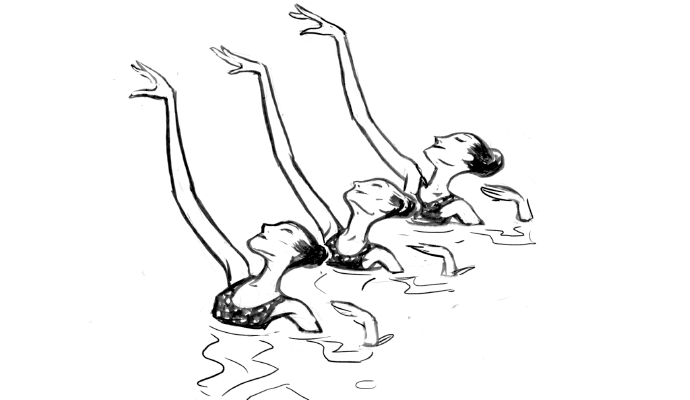Four Secrets for Turning Insight into Execution
Have a problem with follow-up on your team? Neuroscience can help.
A well-designed leadership off-site is a great place to generate the big ideas that can take your business to the next level. You bring in a speaker, have an in-depth discussion, walk through an analysis, and suddenly, light bulbs go off. People see what they’ve been missing or what has been holding them back.
Unfortunately, as soon as people leave the event the light often begins to fade, and even those who complete planned tasks can lose sight of the big idea. Managers may be rigorous about their vision for implementation, but still find that execution varies widely — putting their business at risk and damaging trust and confidence on the team. “Are we going to have another one of those meetings where everyone signs up for stuff, and then no one does anything?” becomes an all-too-common refrain. As a leader, you might be tempted to throw up your hands. You would think that mature professionals could be counted on to follow through on their agreed-upon actions, right? Do you really have to hold their hands?
Well, yes, in a way, you do — for two reasons. First, brain science shows that new insights are fragile. In “The Neuroscience of Leadership,” published by this magazine, David Rock and Jeffrey Schwartz show that when a new idea emerges, it is amorphous and faint, and thus more difficult to call to mind than something familiar. They explain that an engaging experience (like an off-site) is a great way to generate new insights and new connections in the brain. But to turn these new connections into repeatable action, they need to be reactivated again and again, until neural pathways become embedded in everyday thinking and decision making. Rock and Schwartz refer to this process as increasing the “attention density” given to a new idea. “Over time, paying enough attention to any specific brain connection keeps the relevant circuitry open and dynamically alive,” they write. “These circuits can then eventually become not just chemical links but stable, physical changes in the brain’s structure.” (Charles Duhigg’s analysis of habits and Dan Ariely’s description of predictable irrational behavior are both great additions on this subject.)
“Are we going to have another one of those meetings where everyone signs up for stuff, and then no one does anything?”
The second reason your people need more support for follow-up is the sheer volume of information they have to mentally sort and file every day — requests, alerts, introductions, announcements, and the list goes on. The constant noise can swamp even the most competent employee’s system for managing commitments.
Given these two factors, you can increase your team’s execution effectiveness by shifting your view of your role as a leader. Instead of being a taskmaster or allowing poor follow-up to undermine results, you can think of yourself as the architect of your team’s focus and attention — using simple practices to reactivate the insights that really matter over time. Here are four ways to start:
1. Document insights in real time, in vivid ways. Don’t wait until the meeting or off-site ends. Instead, allocate some time near the end of the agenda for reflection — to capture key insights, outline project plans, and schedule next steps. Try sharing a project planning template. Give people time to check their calendars before asking them to commit to next steps. And, where possible, chronicle “aha” moments in ways that easily bring them back to life. I find hiring a person to serve as a graphic recorder, photographing key flip charts, or having people tell the story of the biggest insight from the meeting all make it easier to reactivate important insights later.
2. Be rigorous about your personal system for managing attention and commitments. If you want to increase your team’s attention density, you need to proactively manage your own focus. There are many valuable methods available — for instance, David Allen’s Getting Things Done is explicitly designed to help you manage the flood of information inputs. The key is to have a personal routine for consciously directing your attention to what matters, and to follow it religiously. Having your own system helps you to choose how to direct your team’s attention, and sets the expectation that they should have similar systems. This is also the only way you or your team can make commitments you know you can keep.
3. Use questions to reactivate the “aha.” In your team meetings, in your one-to-ones, and even when passing someone in the hall, try asking questions that prompt people to think more deeply about a big idea. “What did you find when you looked at the external market data?” “What is your goal for that sales call?” “Who are the new customers and who will be helping to set them up correctly?” Ask what the idea means to them, and how it can be applied in practice. As a leader, the questions you ask also let your team know what you expect and how they should prepare for discussions with you (an idea I learned from sales strategy expert Steve Thompson).
4. Notice everyone’s deadlines. Too often, deadlines come and go, and no one mentions the hits or the misses. Unfortunately, this can signal that the project or the task isn’t important. By contrast, if you notice when a key date is coming up, you can ask the relevant individuals how the work is coming along, dig into challenges or delays, or thank your employees for solid execution. Doing so reinforces the idea that you are paying attention, and conveys the significance of everyone’s contributions. Simply recognizing when someone takes a crucial first step or shows signs of real effort to change can make a huge difference, especially when they are learning new habits. This need not become micromanaging if your focus is on helping people make progress toward the goal (rather than on catching their mistakes).
At first blush, you may think that adopting these four habits will cost you precious (and limited) time. But if you give them a try, I think you will find they increase the payoff from every insight your team develops. Isn’t that what we mean when we tell our teams we want them to do less and achieve more?






